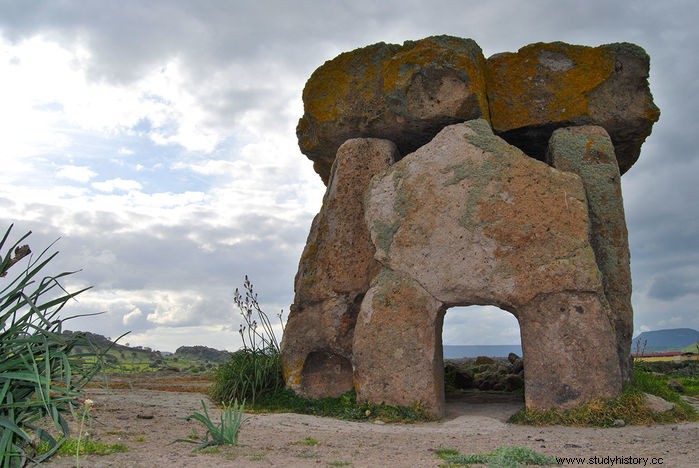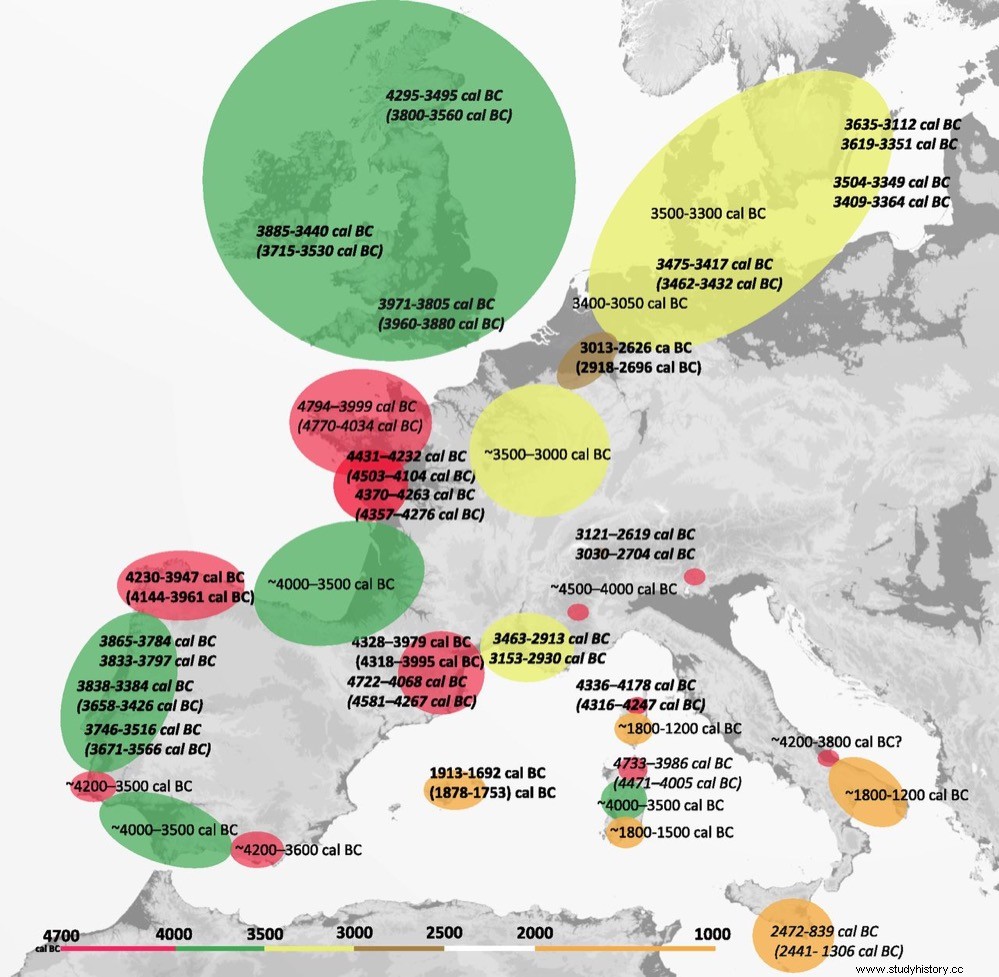Megalithic monuments, such as Stonehenge, which we find distributed throughout most of the European continent, from Italy to the Baltic coasts passing through the Iberian Peninsula and the British Isles, could have a common origin according to a study published by Dr. Bettina Schulz Paulsson , from the University of Gothenburg.
Most of the more than 35,000 European millennial monuments are located near the coasts, which led experts to deduce that the secrets of their construction had originated somewhere in the Middle East, and then spread through the routes. trade through the Mediterranean and the Atlantic.
Paulsson examined radiocarbon dating data from 2,410 megalithic monuments across Europe, in order to piece together an archaeological timeline. The dates do not come from the monuments themselves, but from the human remains buried in the sites next to them.
The oldest, he found, are from northwestern France, including the famous Carnac stones, which date to around 4700 BC, a time when the area was inhabited by a hunter-gatherer culture that also engaged in fishing, since most of the engravings on the stones also show marine species.

In addition, this region of French Brittany is the only one in which complex tombs from the same period have been found, which according to Paulsson is one of the proofs that the construction of this type of monument originated there and then spread to the rest of the world. mainland and islands.
In the study she indicates that the first megaliths were small closed structures or dolmens built with stone slabs and covered by a mound of earth, a model that later evolved into the type of stone circles that marked astronomical events. By 4300 B.C. the megaliths had already spread throughout the coastal areas of southern France, the Mediterranean and the Atlantic coast of the Iberian Peninsula. During the following centuries the expansion process continued in three different waves, also reaching the British Isles, where the oldest megaliths date back to 4,000 BC. (Stonehenge was erected around 2400 BC).
The appearance of megalithic passage tombs in coastal areas, but rarely inland, suggests that diffusion was via sea routes, which if so would delay the appearance of advanced navigation in Europe by about 2,000 years:

The results of the study suggest that the megalithic tombs arose within a short time interval, 200 to 300 years in the second half of the fifth millennium BC. in northwestern France, the Mediterranean and the Atlantic coast of Iberia, with the maritime diffusion model being the most likely explanation for its expansion.
The last wave of megalithic expansion would have occurred in the second half of the fourth millennium, in northern Germany and southern Scandinavia. In the Mediterranean there is a megalithic revival in the second millennium BC. in the Balearic Islands, Apulia and Sicily, already associated with the Bronze Age or the Bell Beaker culture.
The study concludes that the megalithic movements must have been powerful to spread so rapidly in the different phases, and the maritime skills, knowledge and technology of these societies must have been much more developed than previously assumed. . This leads to a radical reassessment of megalithic horizons and invites a new scientific debate on the maritime mobility and organization of Neolithic societies, the nature of these interactions through time, and the rise of maritime navigation.
Fonts
Radiocarbon dates and Bayesian modeling support maritime diffusion model for megaliths in Europe , B. Schulz Paulsson, doi.org/10.1073/pnas.1813268116 / Science.
